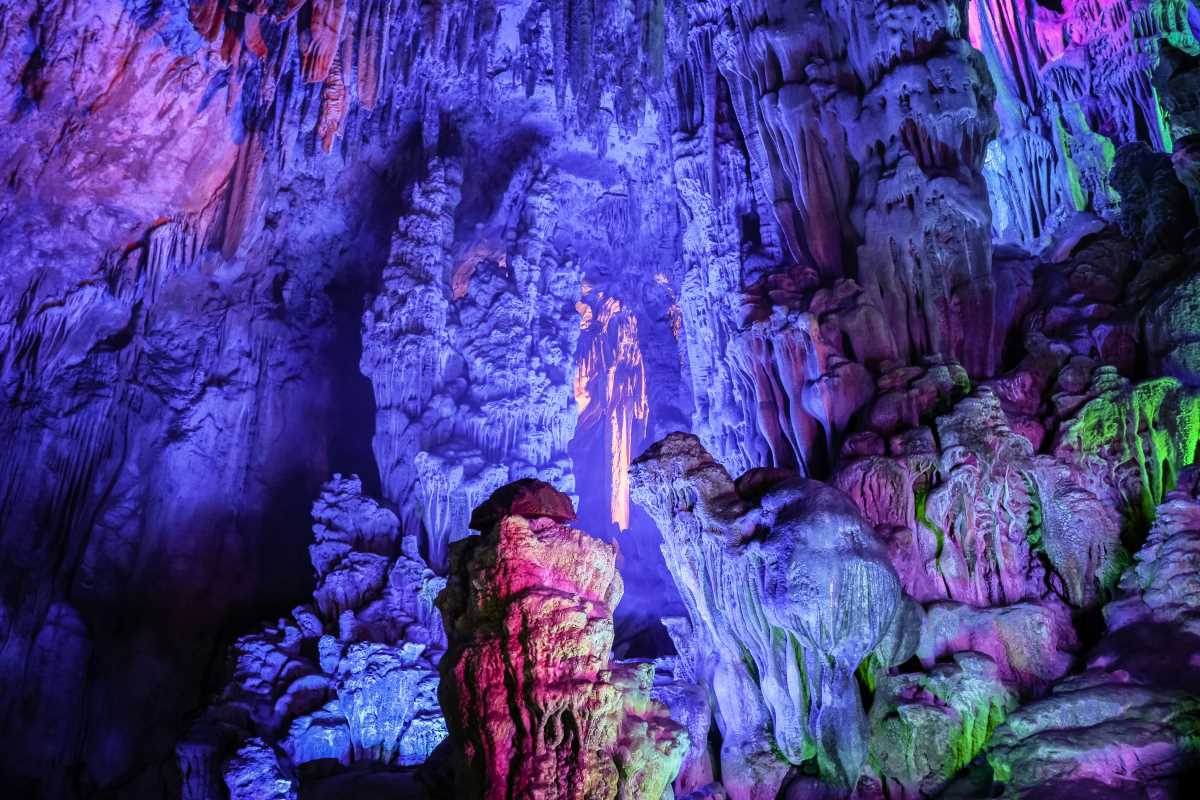America is home to some of the world’s most famous landmarks, drawing millions of visitors each year. While many of these attractions are rich in history and cultural significance, they don’t always live up to the lofty expectations set by travel brochures and social media.
Here's a closer look at some of the most iconic—but potentially overrated—American landmarks, along with tips to make your visit worthwhile.
The Statue of Liberty: Iconic but Limited
The Statue of Liberty in New York City is an enduring symbol of freedom and democracy, captivating visitors with its imposing stature and rich history. However, many are surprised to discover the logistical hurdles involved in visiting this landmark.
Access to the statue's crown is limited, requiring tickets booked months in advance. Even with a reservation, the crown itself can be underwhelming due to its small, cramped space and narrow windows that restrict the view.
For a better experience, consider viewing the statue from a ferry or visiting Liberty State Park in New Jersey, which offers excellent vantage points without the long lines. Pairing your visit with a trip to Ellis Island can also provide deeper historical context and a more enriching experience.
Hollywood Walk of Fame: Glitz That Fades Quickly
The Hollywood Walk of Fame is one of Los Angeles’ most famous attractions, where the names of legendary actors, musicians, and filmmakers are immortalized in star-shaped plaques. While it’s thrilling to find your favorite celebrity’s star, the experience often falls short of expectations. The area is crowded, noisy, and heavily commercialized, with souvenir shops and street performers competing for attention. Many visitors are dismayed by the general lack of glamour, with some streets showing signs of wear and tear.
To make the most of your visit, plan ahead and focus on other nearby attractions, such as the TCL Chinese Theatre or the Hollywood Museum. Alternatively, explore other parts of Los Angeles, like Griffith Observatory or Venice Beach, for a more enjoyable day.
Gateway Arch: Stunning but Short-Lived
The Gateway Arch in St. Louis is a masterpiece of modern architecture and a symbol of westward expansion. Standing at 630 feet tall, it’s the world’s tallest arch, offering incredible photo opportunities from the ground. However, the experience of visiting the interior can be less impressive.
The highlight is an elevator ride to the top, where a small observation deck offers limited views of the city and the Mississippi River. The tight quarters and the short duration of the visit can leave some feeling underwhelmed.
If you’re planning a trip, consider exploring the nearby Gateway Arch National Park, which includes a museum detailing the history of westward expansion. The surrounding city also boasts attractions like the St. Louis Zoo and the City Museum, making it easier to round out your itinerary.
The Grand Canyon: Beauty Overshadowed by Crowds
The Grand Canyon is undeniably one of America’s most awe-inspiring natural wonders, featuring vast, colorful landscapes that seem to stretch on forever.
However, the most popular viewpoints, such as those at the South Rim, can become overcrowded, especially during peak tourist season. The commercialization of the area, with gift shops and busloads of tourists, can detract from the natural beauty of the canyon.
For a more rewarding experience, venture off the beaten path. The North Rim, for example, is less developed and attracts fewer visitors, offering a quieter and more intimate encounter with the canyon’s grandeur.
Alternatively, consider hiking lesser-known trails like the Havasupai Trail, which leads to stunning waterfalls and secluded spots.
Niagara Falls: A Natural Wonder Amid Tourist Traps
Niagara Falls, straddling the border between the United States and Canada, is a breathtaking sight. The thundering waterfalls and mist-filled air create a mesmerizing spectacle that’s hard to forget. However, the area surrounding the falls can feel overly commercialized, with tacky tourist attractions, chain restaurants, and souvenir stands dominating the landscape. The crowds during peak season can also make it difficult to fully appreciate the falls.
To avoid disappointment, plan your visit during the off-peak season, such as late fall or early spring, when the crowds are thinner. Many travelers find the Canadian side offers better views and a more tranquil experience, with beautifully maintained parks and walking trails that bring you closer to nature.
Managing Expectations for Iconic Landmarks
Visiting famous landmarks can be an enriching experience, but it’s important to approach them with realistic expectations. Popular destinations often face challenges such as overcrowding, commercialization, and logistical issues that can detract from their appeal. By doing your research and planning ahead, you can mitigate these drawbacks and focus on what makes these landmarks truly special.
For example, consider visiting during less busy times of the day or year to avoid crowds. Early mornings and weekdays are typically quieter, offering a more relaxed atmosphere. Additionally, combining these visits with lesser-known attractions nearby can add variety and depth to your trip.
While landmarks like the Statue of Liberty, Hollywood Walk of Fame, Gateway Arch, Grand Canyon, and Niagara Falls are iconic in their own right, they may not always meet the lofty expectations of travelers. Understanding the potential drawbacks—such as limited access, overcrowding, or commercialization—can help you better prepare and adjust your itinerary accordingly.
By approaching these destinations with a mix of curiosity and practicality, you can appreciate their historical and cultural significance while making the most of your visit.
 (Image source: Inuvo / DSR)
(Image source: Inuvo / DSR) 





